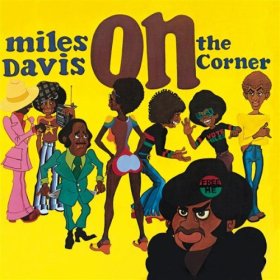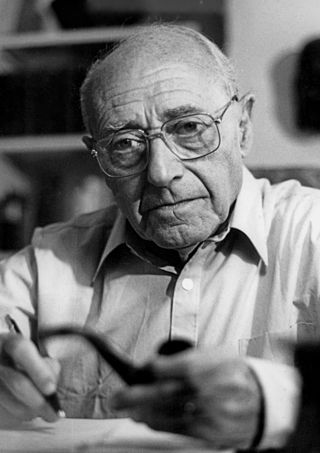Related Research Articles

Herbert Jeffrey Hancock is an American jazz pianist, keyboardist, bandleader, and composer. Hancock started his career with trumpeter Donald Byrd's group. He shortly thereafter joined the Miles Davis Quintet, where he helped to redefine the role of a jazz rhythm section and was one of the primary architects of the post-bop sound. In the 1970s, Hancock experimented with jazz fusion, funk, and electro styles, using a wide array of synthesizers and electronics. It was during this period that he released perhaps his best-known and most influential album, Head Hunters.

Head Hunters is the twelfth studio album by American pianist and composer Herbie Hancock, released October 26, 1973, on Columbia Records. Recording sessions for the album took place in the evening at Wally Heider Studios and Different Fur Trading Co. in San Francisco, California. The album was a commercial and artistic breakthrough for Hancock, crossing over to funk and rock audiences and bringing jazz-funk fusion to mainstream attention, peaking at number 13 on the Billboard 200. Hancock is featured with his ‘Mwandishi’ saxophonist Bennie Maupin and new collaborators – bassist Paul Jackson, percussionist Bill Summers and drummer Harvey Mason. The latter group of collaborators, which would go on to be known as The Headhunters, also played on Hancock's subsequent studio album Thrust (1974). All of the musicians play multiple instruments on the album.

Dianne Elizabeth Reeves is an American jazz singer.

Bennie Maupin is an American jazz multireedist who performs on various saxophones, flute, and bass clarinet.

Filles de Kilimanjaro is a studio album by American jazz trumpeter Miles Davis. It was recorded in June and September 1968, and released on Columbia Records. It was released in the United Kingdom by the company's subsidiary Columbia (CBS) in 1968 and in the United States during February 1969. The album is a transitional work for Davis, who was shifting stylistically from acoustic recordings with his "second great quintet" to his electric period. Filles de Kilimanjaro was well received by contemporary music critics, who viewed it as a significant release in modern jazz. Pianist Chick Corea and bassist Dave Holland appear together on two tracks, their first participation on a Davis album.

On the Corner is a studio album by American jazz trumpeter, bandleader, and composer Miles Davis. It was recorded in June and July 1972 and released on October 11 of the same year by Columbia Records. The album continued Davis's exploration of jazz fusion, and explicitly drew on the influence of funk musicians Sly Stone and James Brown, the experimental music of Karlheinz Stockhausen, ideas by composer Paul Buckmaster, and the free jazz of Ornette Coleman.

Future 2 Future is the forty-third album by Herbie Hancock. Hancock reunited with producer Bill Laswell. The two tried to repeat the success of the three previous albums that combine jazz with electronic music.

Billy Hart is an American jazz drummer and educator. He is known internationally for his work with Herbie Hancock's "Mwandishi" band in the early 1970s, as well with Shirley Horn, Stan Getz, and Quest, among others.

Robert Dick is a flutist, composer, teacher and author.

Sound-System is the thirty-sixth album by jazz pianist Herbie Hancock and the second of three albums co-produced by Bill Laswell with the ‘Rockit’ Band. Guest artists include saxophonist Wayne Shorter, guitarist Henry Kaiser, kora player/percussionist Foday Musa Suso and drummer Anton Fier.
The Revolutionary Ensemble was a free jazz trio consisting of violinist Leroy Jenkins (1932–2007), bassist Sirone and percussionist/pianist Jerome Cooper (1946–2015). The group was active from 1970–1977, and reunited briefly in 2004. Musician George E. Lewis described the trio as "one of the signal groups of the period." Writer John Fordham stated that the group "was remarkable for its concentration on texture, tone colour and the then unclaimed territory between jazz and contemporary classical music." A DownBeat reviewer, writing in 1972, described them as "a unique, utterly contemporary unit of extraordinarily talented players who possess a world understanding of what 'organized sound' is all about."

Josef Tal was an Israeli composer. He wrote three Hebrew operas; four German operas, dramatic scenes; six symphonies; 13 concerti; chamber music, including three string quartets; instrumental works; and electronic compositions. He is considered one of the founding fathers of Israeli art music.
Teddy Kotick was an American jazz bassist, who appeared as a sideman with many of the leading figures of the 1940s and 1950s, including Charlie Parker, Buddy Rich, Artie Shaw, Horace Silver, Phil Woods and Bill Evans.

Charles Anthony "Buster" Williams is an American jazz bassist. Williams is known for his membership in pianist Herbie Hancock's early 1970s group, working with guitarist Larry Coryell from the 1980s to present, working in the Thelonious Monk repertory band Sphere and as the accompanist of choice for many singers, including Nancy Wilson.
Neil Burton Rolnick is an American composer and educator living in New York City.

The discography of the American jazz artist Herbie Hancock consists of forty-one studio albums, twelve live albums, sixty-two compilation albums, five soundtrack albums, thirty-eight physical singles, nine promo singles and four songs not released as singles, but that charted due to downloads. This article does not include re-issues, unless they are counted separately from the original works in the charts, furthermore because of the enormous amount of material published, this discography omits less notable appearances in compilations and live albums. The discography shows the peak weekly main chart positions of eight selected countries: United States, France,[a] Germany, Japan,[b] Netherlands, Sweden,[c] Switzerland and United Kingdom. Positions also listed on United States are R&B / hip hop, dance / club, jazz[d] and bubbling under charts.[e] The peaks do not refer necessarily to the position that a record reached when it was first released. Also included are certifications from the Recording Industry Association of America (RIAA)[f] and the Bundesverband Musikindustrie (BVMI).[g]

Freddie Hubbard/Stanley Turrentine In Concert Volume One is a live album recorded in 1973 by jazz trumpeter Freddie Hubbard and tenor saxophonist Stanley Turrentine. It was recorded in Chicago and Detroit for Creed Taylor's CTI label and features performances by Hubbard, Turrentine, guitarist Eric Gale, bassist Ron Carter, drummer Jack DeJohnette and pianist Herbie Hancock.

Afternoon of a Georgia Faun is an album by American jazz saxophonist Marion Brown recorded in 1970 and released on the ECM label. Along with Geechee Recollections and Sweet Earth Flying, it was one of Brown's albums dedicated to the US state of Georgia. The album features Brown, multi-instrumentalists Anthony Braxton and Bennie Maupin, vocalists Jeanne Lee and Gayle Palmore, pianist Chick Corea, and percussionists Andrew Cyrille and Jack Gregg, all of whom double on secondary instruments, along with three supplementary percussionists for the second track.
Joel Chadabe was an American composer, author, and internationally recognized pioneer in the development of interactive music systems. He earned a BA from the University of North Carolina at Chapel Hill, then earned his MM at Yale while studying under Elliott Carter. His students include Liz Phillips, Richard Lainhart, and David A. Jaffe. He designed the CEMS, built by Robert Moog, in 1967. He was the president of Intelligent Music, "one of the several companies that distribute software and hardware for interactive composing," from 1983 to 1994. The Electronic Music Foundation was founded in 1994 by Chadabe. Chadabe was the curator at New York sound gallery Engine 27 in 2000–01. Chadabe was given the SEAMUS Lifetime Achievement Award in 2007. In a 2013 interview with Peter Shea, Chadabe discussed a variety of topics, ranging from the history of electronic music to his own work processes.

Mike Moreno is a jazz guitarist and composer from Houston, Texas.
References
- ↑ "Robert J. Gluck". University of Albany. Retrieved 10 December 2020.
- ↑ "Bob Gluck Home Page".
- ↑ "Layered Histories: Rubin&Gluck".
- ↑ "Interactive Sound Installation".
- ↑ "Bob Gluck: Something Quiet album review @ All About Jazz". 29 December 2010.
- ↑ Smith, Steve; Oestreich, James R.; Kozinn, Allan (14 January 2011). "Music in Review". The New York Times.
- ↑ "Bob Gluck international history essays".
- ↑ "EMF Media Robert Gluck". www.emfmedia.org. Archived from the original on 2002-01-20.
- ↑ "EMF Media Robert Gluck". www.emfmedia.org. Archived from the original on 2002-01-20.
- ↑ "EMF Media Robert Gluck". www.emfmedia.org. Archived from the original on 2002-01-20.
- ↑ "Home". fmr-records.com.
- ↑ "Home". fmr-records.com.
- ↑ "Artist Page". www.innova.mu. Archived from the original on 2010-12-02.
- ↑ "Home". fmr-records.com.
- ↑ "Home". ictusrecords.com.
- ↑ "Home". ictusrecords.com.
- ↑ "Home". fmr-records.com.
- ↑ "Home". ictusrecords.com.
- ↑ "Home". fmr-records.com.